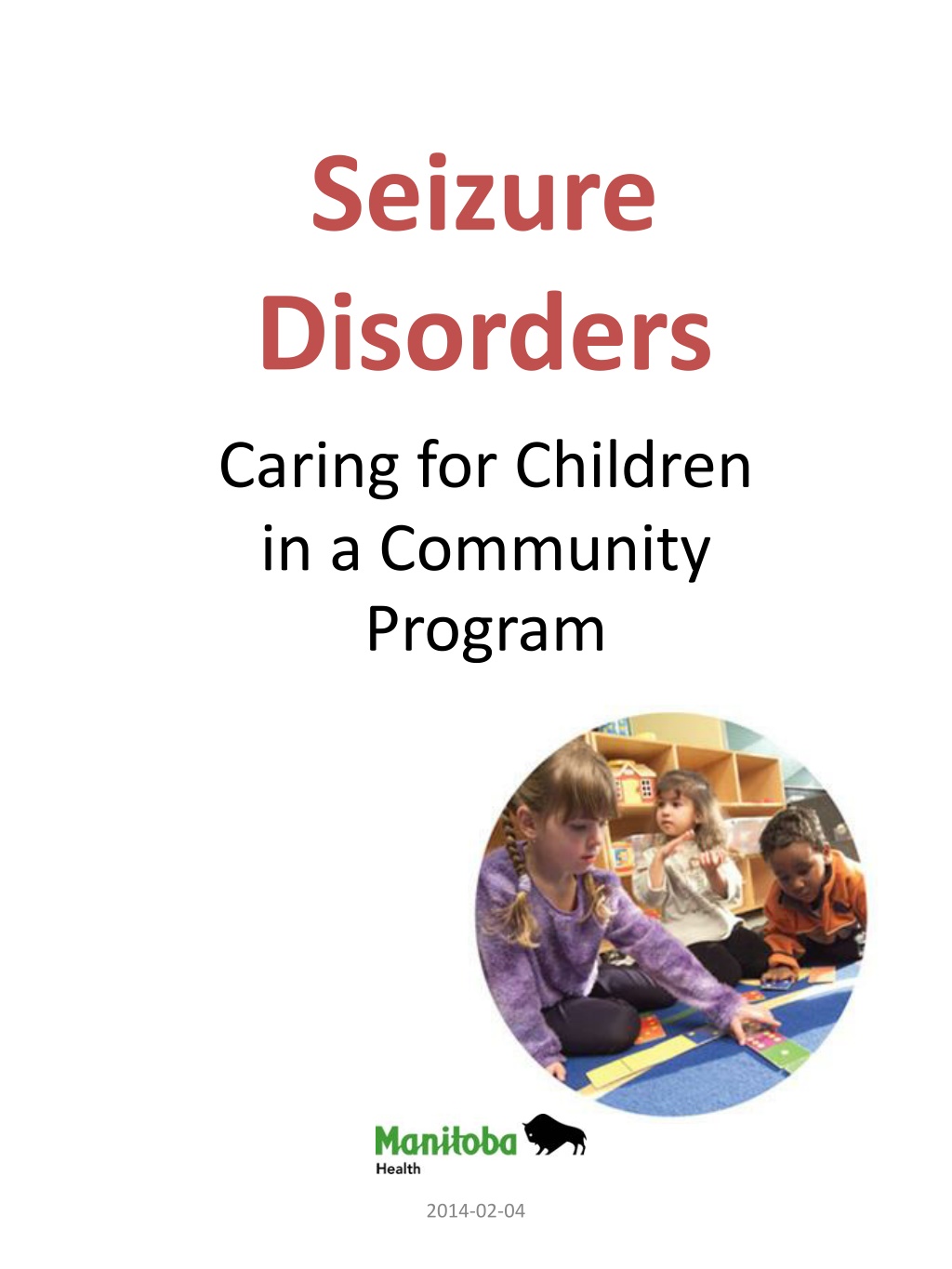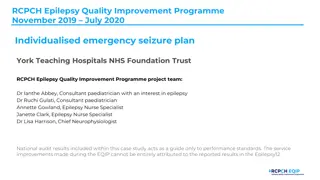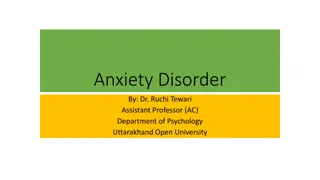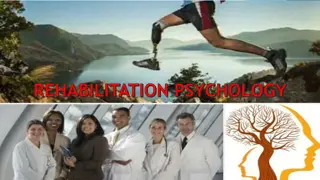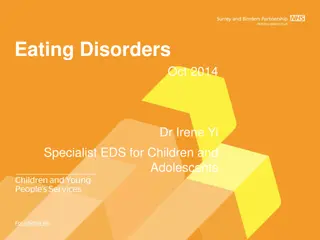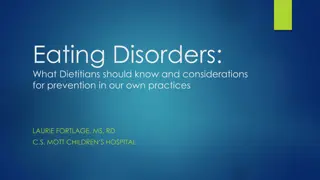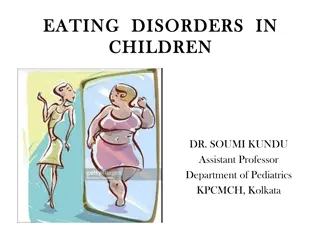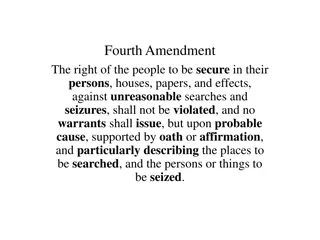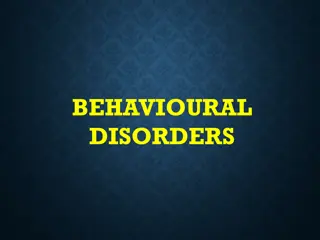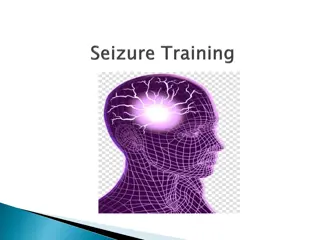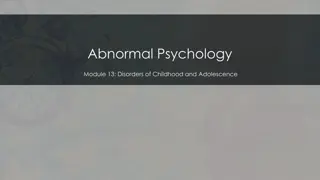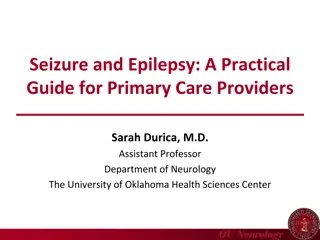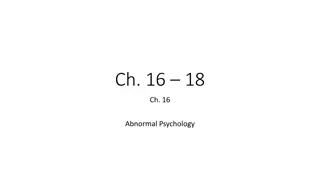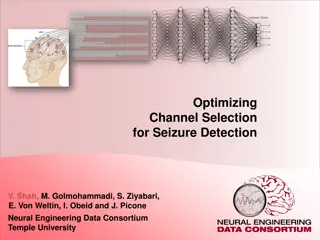Understanding Seizure Disorders in Children: Causes, Types, and Response
Seizure disorders in children can be caused by various factors such as brain development issues, brain injuries, infections, and more. Triggers like stress, lack of sleep, and certain lifestyle habits can lead to seizures. There are different types of seizures, including tonic-clonic, absence, myoclonic, and more, each with distinct characteristics. Knowing how to respond during a seizure, such as noting the time, ensuring the child's safety, and providing comfort afterward, is crucial for caregivers in community programs.
Download Presentation

Please find below an Image/Link to download the presentation.
The content on the website is provided AS IS for your information and personal use only. It may not be sold, licensed, or shared on other websites without obtaining consent from the author. Download presentation by click this link. If you encounter any issues during the download, it is possible that the publisher has removed the file from their server.
E N D
Presentation Transcript
Seizure Disorders Caring for Children in a Community Program 2014-02-04
Seizures Abnormal burst of electrical signals in the brain When a person has more than one seizure, it is called a seizure disorder or epilepsy
Seizures The part of brain where erratic impulses occur affects where seizure occurs in body
Causes of Seizures Problems with brain development before birth Lack of oxygen or damage to brain during/after birth Brain injury Brain infections Metabolic conditions Interruption in blood flow to the brain (e.g., stroke) Brain tumor
Triggers for Seizures Missing a regular dosage of anti-seizure medication Stress, excitement Lack of sleep Poor lifestyle habits Illness, fever Flickering lights Hyperventilation Extreme emotions Heat, humidity Hormonal changes
Types of Seizures Generalized Tonic clonic Absence Myoclonic Atonic Partial Simple partial Complex partial
Tonic Clonic Seizure (generalized) Suddenly loses consciousness Body stiffens (tonic phase) Body jerks repeatedly (clonic phase) Skin may turn pale or blue/grey May cry out May have changes in breathing May clench teeth May bite tongue May drool or have increased salivation May lose bladder and bowel control Will be confused and tired after the seizure
Responding to Tonic Clonic Seizure During the seizure 1. Note the time when you become aware of the seizure. 2. Put the child on the floor in a side-lying position. Loosen tight clothing around the neck. 3. Keep the child safe. Move any harmful objects out of the child s way. 4. Stay with the child. After the seizure Stay with the child. Reassure and comfort the child. Inform the parent/guardian that the seizure occurred.
Other Generalized Seizures Absence Brief Stares blankly May have eye blinking, fluttering or upward rolling eyes Loss of consciousness Myoclonic Brief Sudden muscle jerks may be mild or intense, can affect one part or whole body Occurs more frequently when falling asleep or upon awakening, may occur in succession No loss of consciousness Recovers within seconds Atonic Brief Sudden loss in muscle tone if standing, may fall to the ground If loss of muscle tone is severe, dramatic loss of muscle tone occurs Loss of consciousness
Responding to Absence, Myoclonic & Atonic Seizures During the seizure 1. Stay with the child. 2. Keep the child safe. Move child if in an unsafe place. After the seizure Check for injuries, if applicable. Reassure and comfort the child. Wearing a helmet may be recommended for children with myoclonic and atonic seizures.
Partial Seizures Simple partial Affects movement, sensations, emotions or autonomic functions May have jerking movements May see or hear things that are not there May appear sad, afraid, angry, laugh out loud. May experience loss of sensation, tingling, pain or nausea Awake & aware Complex partial seizures May begin with an aura (warning sign) May stare or appear dazed May make repeated motions (automatisms) May appear dizzy, confused, anxious, scared, angry and experience abdominal pain or an unusual taste or odor. May respond inappropriately May be confused and tired after the seizure Altered level of consciousness.
Complex Partial Seizures During the seizure 1. Note the time you become aware of the seizure. 2. Keep the child safe. Move child if in an unsafe place. Guide child away from hazards. After the seizure Reassure and comfort the child. Reorient to surroundings. If the seizure progresses to a secondarily generalized seizure (partial seizures that spread throughout the brain to become a generalized), implement the response for tonic-clonic seizures.
Observing Seizures Length of the seizure Time and date seizure occurred Description of seizure activity observed. Activities child was participating in Exposure to possible triggers
Emergency Situations Seizure lasts longer than 5 minutes Repetitive seizures with no recovery in between Serious injury Other medical concerns Pregnant, diabetes 1.Activate 911/EMS. 2.Notify parent/guardian. Do NOT leave child alone.
Treatment of Seizures Anti-seizure medication Rescue medication Surgery Ketogenic diet Vagus Nerve Stimulator
Anti-seizure Medication Most common treatment Usually taken at home Common side effects Drowsiness Fatigue Changes in attention span Changes in appetite Mood swings Altered balance Decreased coordination
Rescue Medication To stop seizure or prevent further seizures occurring in a cluster Lorazepam, Midazolam Usually given after 5 minutes of seizure activity When to give rescue medication is specific in health care plan If you did NOT witness start of seizure, administer rescue medication immediately
Administering Lorazepam 1. Place Lorazepam between inner cheek and gum. Massage cheek gently. 2. Activate 911 EMS if seizure does not stop after specified amount of time (see health care plan). 3. Notify parent guardian. 4. Stay with child until EMS arrives.
Precautions Children should be allowed to enjoy a wide range of activities Some activities may require precautions Swimming Climbing Cycling Bathing
Child specific information History of seizure activity Typical length & frequency of seizure(s) Precautions, if any Location of rescue medication, if prescribed Health Care Plans are located in child file and binder
